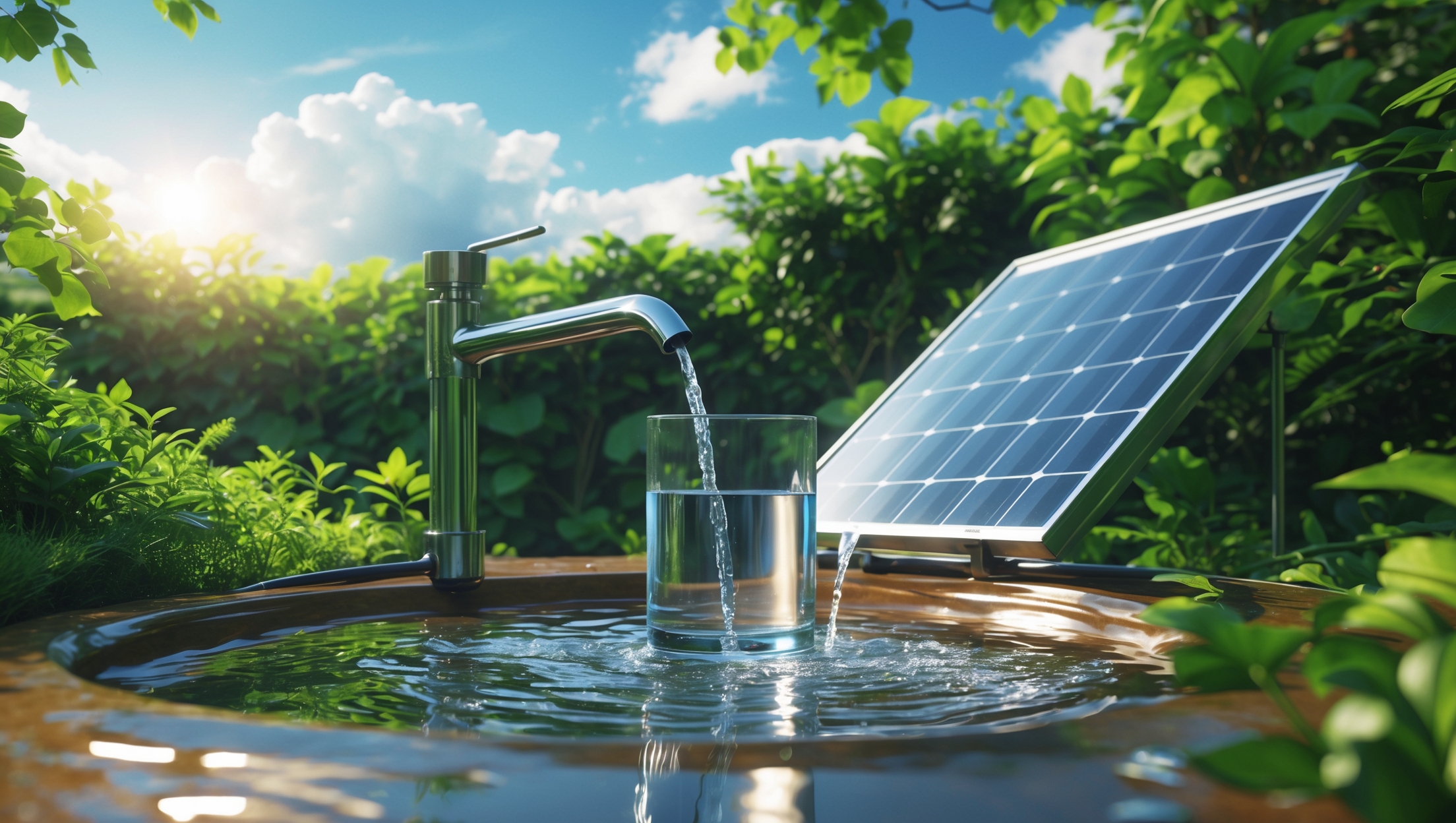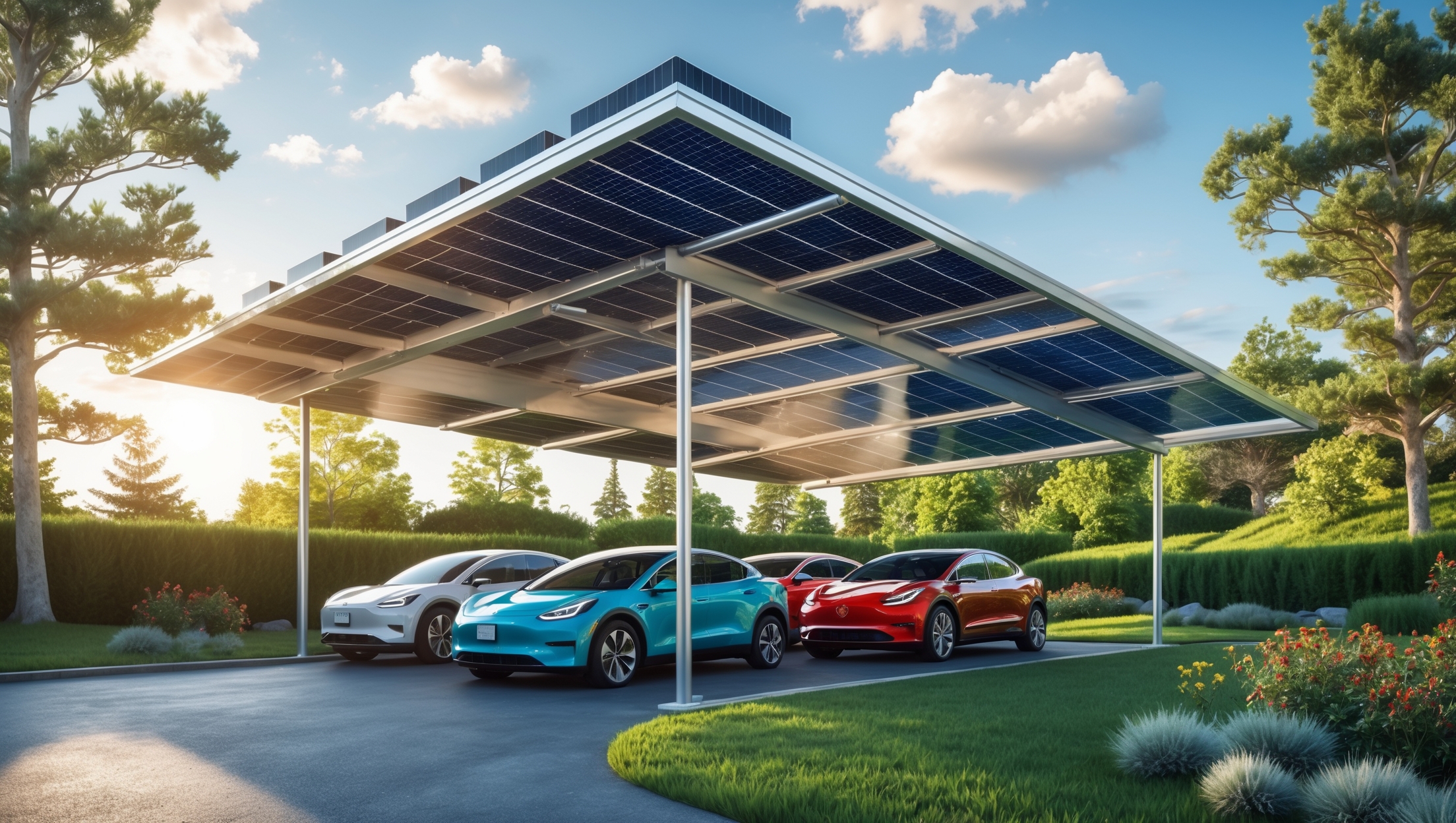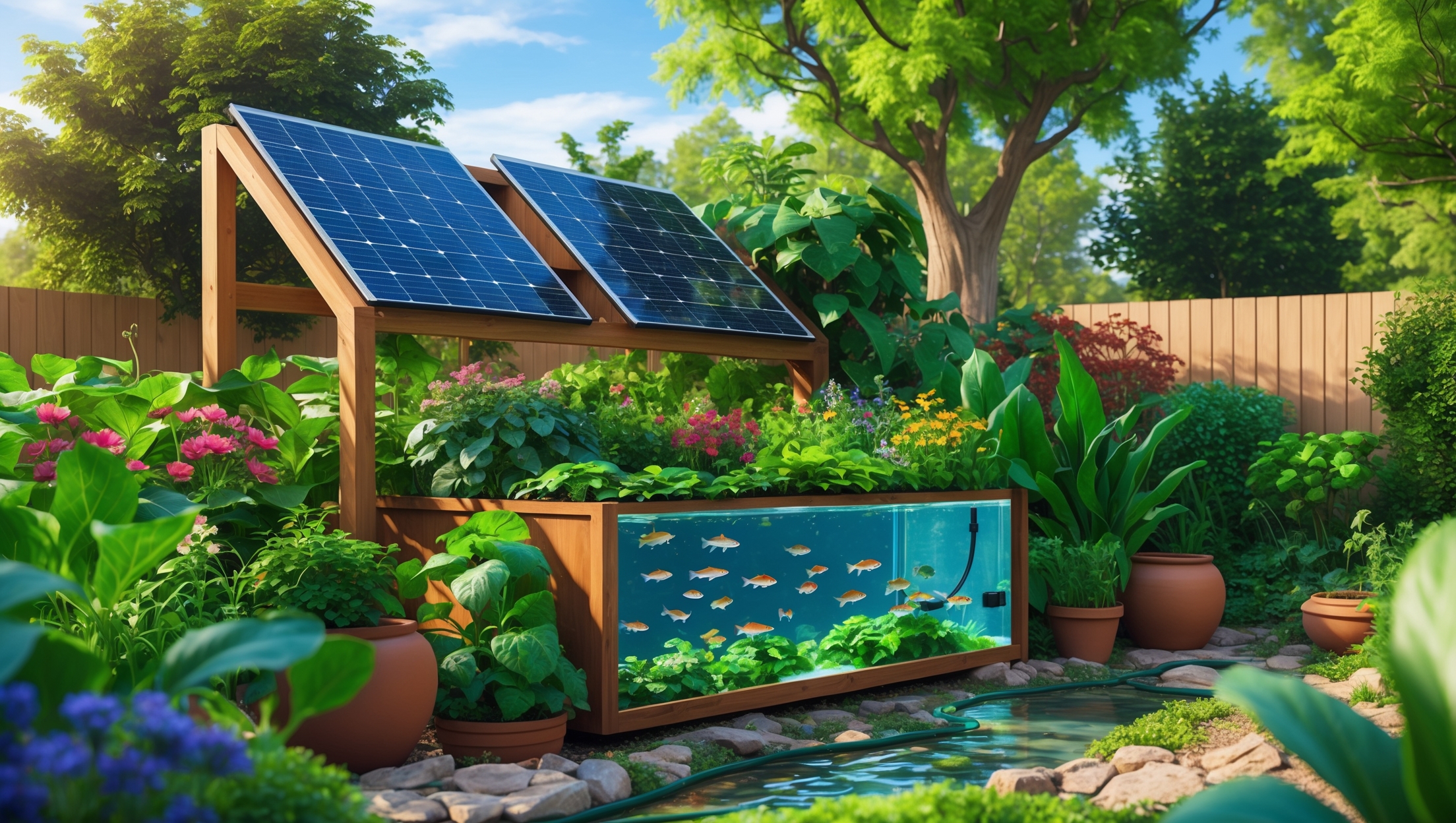Introduction: The Challenge and Opportunity of Marketing DIY Solar Water Purification
DIY solar water purification systems are at the intersection of sustainable living, green technology, and the growing demand for clean water solutions. For eco-entrepreneurs and small startups, offering solar water purification kits or installation services can be a rewarding business with real-world impact. However, even the most innovative product can struggle without an effective marketing strategy tailored to this niche. The challenge is multi-layered: the technology must be demystified, trust must be built with an audience unfamiliar with DIY water solutions, and your message must stand out in a crowded digital landscape. At the same time, the opportunity is significant—millions of homeowners, homesteaders, off-grid enthusiasts, and sustainability advocates are actively seeking reliable, affordable ways to secure clean water sustainably. This guide breaks down actionable, field-tested marketing strategies that work for DIY solar water purification startups, from branding and content creation to community engagement and targeted digital tactics.
Understanding the DIY Solar Water Purification Audience
Defining Your Customer Profiles
Before launching any marketing initiative, it’s crucial to understand your ideal customers. DIY solar water purification appeals to a diverse but distinct set of audiences:
- Eco-conscious homeowners: Looking to reduce reliance on municipal water and lower environmental impact.
- Off-grid and rural residents: Need reliable, independent water sources.
- Homesteaders and preppers: Value self-sufficiency and emergency preparedness.
- Small-scale farmers and gardeners: Require clean water for irrigation and livestock.
- NGOs and educators: Seek demonstration projects or affordable solutions for underserved communities.
Identifying Key Motivations and Pain Points
Effective marketing speaks directly to your audience’s motivations and addresses their fears or challenges. For this sector, common drivers include:
- Desire for independence from utility companies
- Concern about water quality and contaminants
- Interest in sustainability and renewable technology
- Need for affordable, low-maintenance solutions
- Confusion around technical setup or maintenance
Branding and Positioning: Standing Out in a Niche Market
Crafting a Mission-Driven Brand
Your brand should reflect the values of your target audience. Emphasize transparency, environmental stewardship, and practical know-how. Use clear, jargon-free language. Highlight case studies and testimonials to build trust.
Differentiating Your Offering
Is your system easier to install, more affordable, or better suited for specific climates? Do you provide unique educational resources or ongoing support? Make your unique selling points prominent across all marketing materials.
Content Marketing: Educate, Engage, and Build Trust
Creating High-Value Educational Content
Content marketing is especially powerful for DIY solar water purification. Develop:
- How-to guides: Step-by-step written tutorials and videos for system setup, troubleshooting, and maintenance.
- Infographics: Visual explainers of system benefits, water purification stages, and solar technology basics.
- Case studies: Real stories of installations in different settings, with before/after data and personal testimonials.
- FAQ pages: Address common concerns such as water quality, system longevity, and safety.
- Downloadable checklists: Maintenance schedules, installation prep, and parts lists for DIYers.
SEO and Content Distribution
Optimizing content for search engines ensures your startup is discoverable. Focus on:
- Long-tail keywords (e.g., “DIY solar water purifier for well water”)
- Question-based queries (e.g., “How to maintain a solar water purification system?”)
- Local SEO if you offer installation services
Amplify reach by sharing content on sustainable living forums, relevant Facebook groups, and LinkedIn communities.
Visual Storytelling: Using Images and Videos to Build Credibility
Photography and Product Demonstrations
High-quality, realistic images of your systems in real-life settings build trust and help customers visualize the benefits. Feature:
- Step-by-step installation photos
- Before-and-after shots of water clarity
- System components laid out for easy identification
- Completed setups in diverse environments (urban, rural, gardens, off-grid cabins)
Video Tutorials and Testimonials
Short, clear videos showing the installation process, maintenance routines, or customer reviews are shareable assets that drive engagement. Use simple language, avoid technical jargon, and keep production values clean and professional.
Community Engagement: Building a Loyal Following
Workshops and Demonstrations
Host free or low-cost community workshops, either in person or virtually, to demonstrate system setup and maintenance. Partner with local environmental groups, schools, or community centers to expand reach.
Online Communities and Support Forums
Foster a dedicated user community through:
- Facebook or Discord groups for customers and DIY enthusiasts
- Regular Q&A sessions and live troubleshooting webinars
- Encouraging user-generated content—photos, reviews, and tips
Active engagement increases loyalty and word-of-mouth referrals.
Digital Advertising: Targeted, Cost-Effective Campaigns
Google Search and Display Ads
Invest in targeted Google Ads using carefully selected keywords related to solar water purification, off-grid water solutions, and sustainable home upgrades. Use ad copy that addresses specific pain points (e.g., “Tired of unsafe well water? Try solar purification!”).
Social Media Advertising
Facebook and Instagram ads allow precise targeting by interests (sustainability, homesteading, off-grid living) and demographics. Use visually compelling images or short videos. Test different messages and calls to action to see what resonates.
Retargeting Campaigns
Set up retargeting ads for website visitors who didn’t purchase or sign up. Remind them of your unique advantages and offer an incentive (free guide, discount, or consultation).
Partnerships and Collaborations
Influencer Outreach and Product Reviews
Partner with respected influencers in the sustainable living, DIY, and prepping spaces. Provide them with test kits or sponsor in-depth reviews. Authentic testimonials can drive significant traffic and conversions.
Collaboration with Local Businesses and Organizations
Work with eco-friendly hardware stores, gardening centers, or water testing labs. Offer co-branded workshops, bundle deals, or referral incentives.
Public Relations and Thought Leadership
Media Coverage and Press Releases
Pitch your story to local newspapers, environmental blogs, and sustainability podcasts. Focus on your mission, innovation, and community impact. Prepare media kits with high-quality images and concise company backgrounders.
Speaking Engagements and Webinars
Position your founders or technical leads as experts by speaking at green tech events, online conferences, or local sustainability fairs. Host webinars on water purification trends and DIY best practices.
Customer Experience: Turning Buyers into Advocates
Streamlined Customer Support
Fast, knowledgeable support is essential for building trust. Offer:
- Live chat on your website
- Comprehensive installation manuals and troubleshooting guides
- Responsive email and phone support
Encouraging Reviews and Referrals
After purchase, follow up with customers to request honest reviews and testimonials. Consider a referral program with discounts or bonuses for successful recommendations.
Measuring Success: Analytics and Continuous Improvement
Key Performance Indicators (KPIs)
Track metrics such as:
- Website traffic and conversion rates
- Cost per lead and customer acquisition cost
- Email open and click-through rates
- Workshop attendance and engagement
- Customer satisfaction and Net Promoter Score (NPS)
A/B Testing and Iteration
Regularly test new website layouts, ad copy, and content formats. Use analytics to identify what works best and refine your approach continuously.
Conclusion: Building a Sustainable Marketing Engine for Your Green Startup
Marketing a DIY solar water purification startup is a unique challenge that demands creativity, persistence, and an authentic connection with your audience. By deeply understanding your customers’ motivations and pain points, you can create compelling content that educates and reassures. Strong branding and visual storytelling set you apart, while digital advertising and community engagement accelerate growth. Partnerships and thought leadership expand your reach and credibility. Most importantly, a relentless focus on customer experience transforms buyers into advocates, fueling organic growth through word-of-mouth and referrals.
Success in this field isn’t about quick wins—it’s about building trust and demonstrating value over time. Stay nimble by measuring results and iterating your approach. Listen to feedback, adapt to new trends in green technology, and never lose sight of your mission to provide accessible, sustainable water solutions. With the right marketing strategies, your DIY solar water purification startup can thrive, making a meaningful impact on both the environment and your community. The future of clean, sustainable water is bright—make sure your message is part of it.





You mentioned that building trust is important, especially since many people are unfamiliar with DIY water purification. What are some specific ways startups can demonstrate their systems are safe and effective for first-time buyers?
Startups can build trust by offering transparent test results from independent labs to show their systems effectively purify water. Sharing customer testimonials, before-and-after water quality images, and even demo videos of the system in action can also help. Hosting local workshops or free trial events lets people see the purification process firsthand. Clear instructions, safety certifications, and responsive customer support further reassure first-time buyers.
Does your experience suggest that community engagement works better through online groups or in-person events when building trust around new solar water purification kits, particularly for preppers and homesteaders?
In our experience, a combination of both online groups and in-person events is effective, but in-person events usually build trust more quickly for preppers and homesteaders. Hands-on demonstrations and face-to-face conversations help answer technical questions and address concerns directly. However, online groups are excellent for ongoing support, updates, and reaching those in remote areas. Blending both approaches gives the best results.
When it comes to branding, how much should a startup emphasize the environmental benefits versus the self-sufficiency aspect, especially since both seem important to your target audiences?
Balancing environmental benefits with self-sufficiency is key. Typically, you can lead with the aspect that best fits your core audience—for instance, focus on eco-friendliness for environmentally conscious customers, and highlight independence for those seeking self-reliance. Ideally, weave both into your messaging, showing how your product supports a greener planet while also empowering users to take control of their water needs.